Once you enter the world of commerce and marketing, there’s no shortage of acronyms to learn.
For example: B2B. B2C. SaaS. CTR. LTV. AOV.
And, of course, DTC.
While you have time to brush up on other marketing and commerce acronyms, if you’re a new merchant, the time is now to learn exactly what DTC is and all about this business model’s most recent trends.
In short, DTC (direct-to-consumer) is a business model where consumer brands sell products directly to consumers from their own warehouses. This differs from the business-to-consumer (B2C) model, where a brand will move its products via a wholesaler or retailer.
The DTC business model is growing in popularity among brands, as evidenced by recent research. DTC ecommerce sales for established brands will reach $117.47 billion this year, and DTC sales are expected to reach $161.22 billion by 2024.
This article will discuss the 10 recent trends you need to know to take your DTC business to the next level.
Table of Contents
- Trend 1: Personalized storytelling to drive customer acquisition
- Trend 2: Heightened focus on customers and your brand
- Trend 3: Driving your audience to closed community platforms
- Trend 4: Adoption of augmented reality (AR) to enhance the digital journey
- Trend 5: Increase in user-generated content (UGC)
- Trend 6: Shift to ’70s aesthetics
- Trend 7: Affiliate programs to drive growth
- Trend 8: Increase in BNPL
- Trend 9: Using quizzes to capture zero-party data
- Trend 10: NFTs used as loyalty rewards
Trend 1: Personalized storytelling to drive customer acquisition
In 2019, the cost of acquiring new customers had increased by 60% since 2013, and customer acquisition costs are still on the rise for both DTC companies and traditional retailers
In fact, 66% of DTC companies and 54% of traditional retailers say increasing customer acquisition costs is their top challenge to achieving their 2022 scaling goals.
One reason for increased customer acquisition costs is recent changes in iOS and third-party tracking, making it significantly more challenging for brands to engage in traditional customer acquisition tactics. Namely, tracking customers across platforms and retargeting ads.
For added context, with Apple’s new App Tracking Transparency (ATT) framework, opt-ins for tracking have seen an estimated drop between 55% and 85%. This reduction in the effectiveness of tracking across the Apple ecosystem has created significant challenges for traditional personalized advertising and attribution.
Nik Sharma, CEO of Sharma Brands and HOOX, explains how—in light of these changes—DTC brands are taking a more creative approach to reaching new customers and reducing customer acquisition costs (CAC).
“The biggest trend right now is more personalized storytelling to drive more efficient customer acquisition. In the last few years, storytelling has become a huge focal point of marketers at brands of all sizes,” says Sharma.
“After the changes affecting IDFA from iOS 14.5, personalized storytelling is the only thing that works from an advertising standpoint. Ad platforms don’t know the exact intent level of a consumer to be able to match them with the right pairing of ad creative.
As a result, storytelling that builds a relationship with a consumer on the other side is one of the only ways to continue scaling advertising.”
The rapid growth of DTC brands on TikTok is the perfect example of using personalized storytelling for customer acquisition.
For example, take a gander at Liquid Death’s TikTok and you’ll see viral video after video of its muscleman mascot running around “murdering thirst.”
This creative storytelling seems to be working, considering this hip water brand has 2.6 million followers.
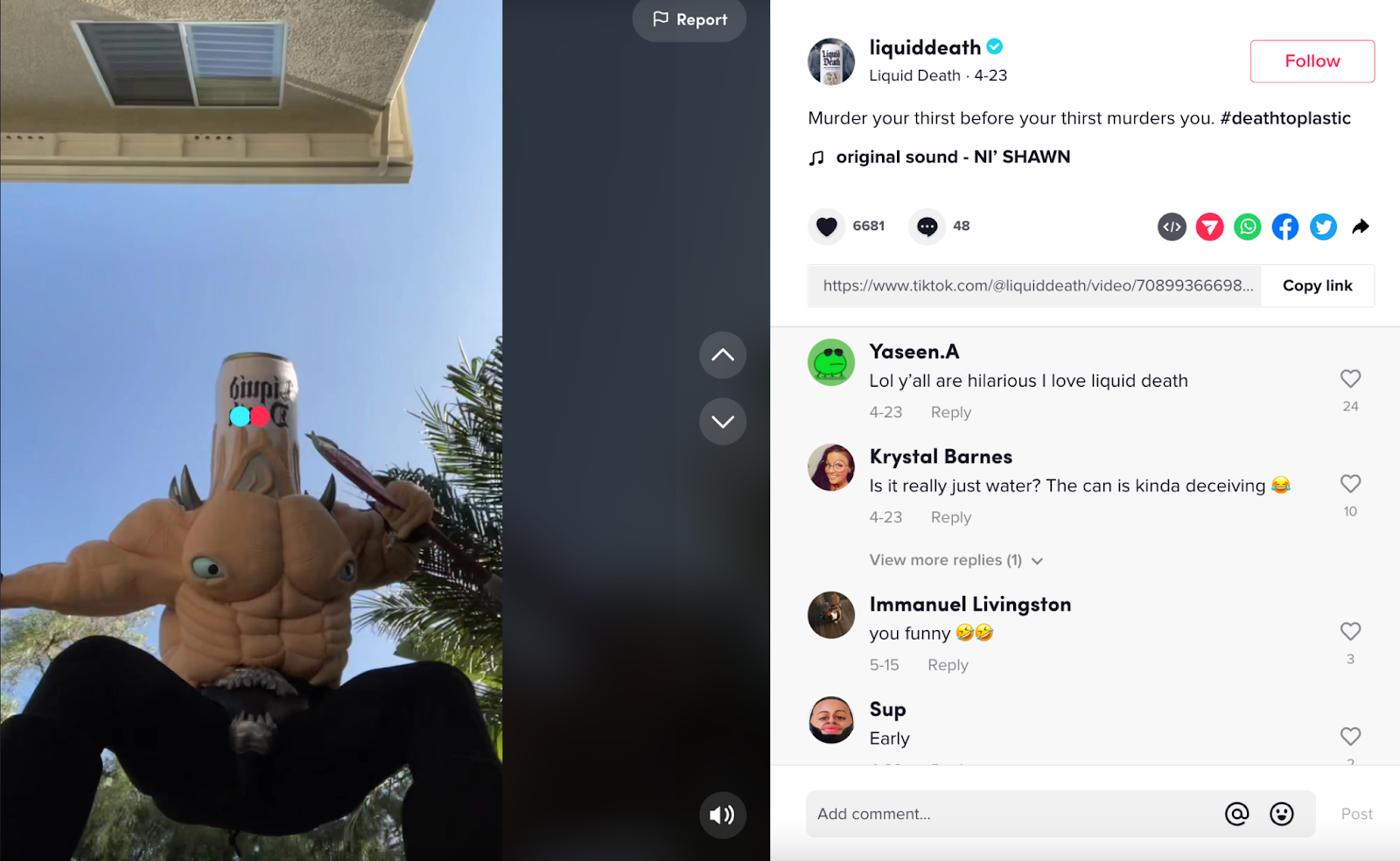
Other DTC brands are following suit with personalized storytelling that captures new customers—not only on TikTok, but on Instagram, Facebook, Snapchat, and even DTC brands’ home pages.
Trend 2: Heightened focus on customers and your brand to win consumers’ hearts
Let’s talk about the elephant in the room: inflation.
In March 2022, the University of Michigan’s Index of Consumer Sentiment Index fell to 59.4. This represents the lowest reading in more than 10 years.
As inflation rises, consumers are tightening their belts.
Research from Deloitte shows inflation is a huge cause of consumer’s worry about personal finances and economic growth. Additionally, inflation is undoubtedly affecting consumer spending patterns.
And research from CNBC shows even higher-income consumers are cutting back on spending.

Image source: CNBC
With inflation on the rise and consumers cutting back, what’s a DTC brand that’s trying to grow to do?
Eli Weiss, senior director of CX and retention at Jones Road Beauty, explains how DTC brands can trudge through economic turmoil. Hint: don’t retreat—focus.
“As the economy tightens, consumers will limit spending on things that don’t make them feel something or solve a real problem,” says Weiss.
The days of dropshipping or Facebook ads arbitrage are over. It’s time to focus on customers and your brand."
In EY’s recent article, “Future Consumer Index: In crisis, but in control,” Kristina Rogers adds to Weiss’s sentiment with the perfect advice:
“Brands that typically cut marketing budgets during times of economic turmoil now face the risk of further disintermediation from consumers who are becoming less brand loyal in their purchase decisions. To counter this, companies must instead double down on their efforts to sharpen and define a distinctive brand proposition by exploring new and targeted ways to meet and engage with consumers across multiple channels. This includes experimenting with digital innovation as well as collecting and leveraging consumer data in ways that add value to physical and digital customer experiences.”
Trend 3: Driving your audience to closed-community platforms
The power of growing an audience through social media for DTC brands cannot be understated.
As of January 2022, 3.96 billion people use social media regularly, and the average adult spends 95 minutes per day on social media, which is higher than ever.
Consumers spend large chunks of time on social media for entertainment, engagement with brands, product discovery, and shopping. Brands that aren’t leveraging social media are missing out.
But, here’s the thing. Growing your audience on social media isn’t all daisies and roses. Social media platforms have complete control of how the platform works and who it favors. And, naturally, the platforms have one goal in mind—lining their own pockets with money.
As a result, it’s common for social media giants to switch up how they present information on feeds, change their algorithms to favor moneymakers, and shift their focus willy-nilly to match consumer trends. Sometimes they may suspend your account forever, like they did with Nathan Barry.
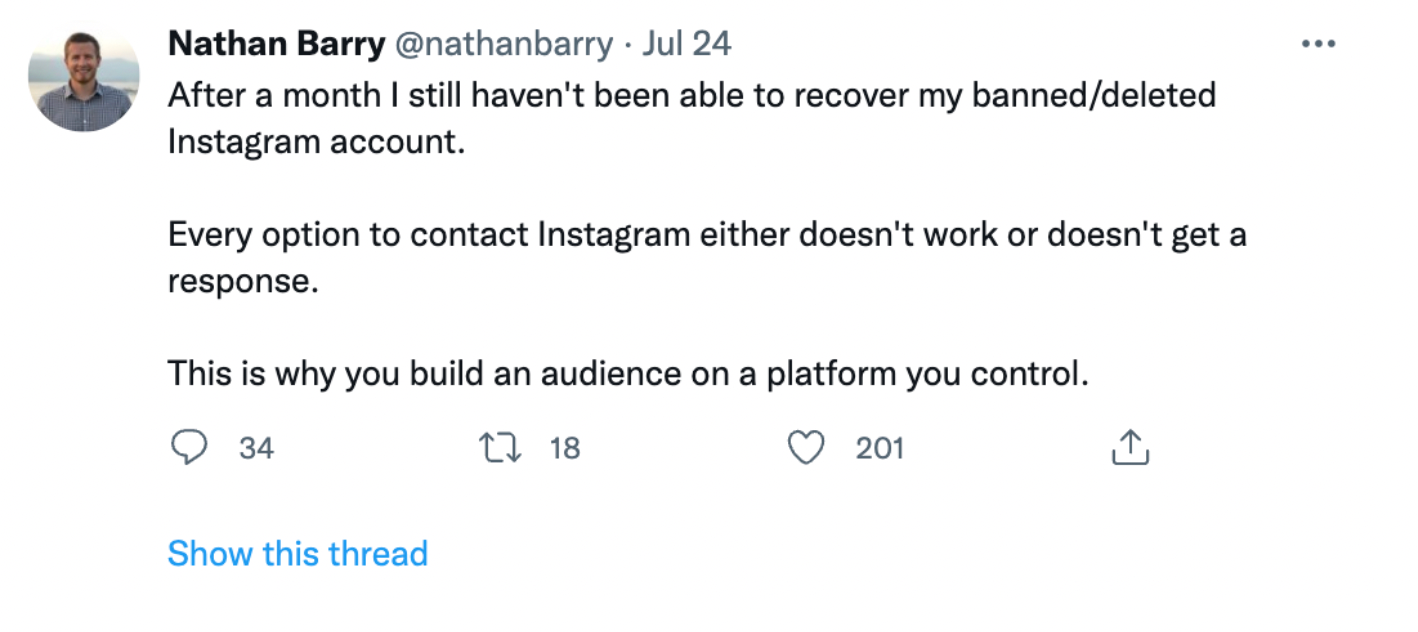
The smartest DTC marketers are those who are leveraging social media not just to build an audience, but to drive their customers’ attention off those rented platforms and to their privately owned locations.
“The future belongs to brands who can blend a single story—not their story, but the story their audience already inhabits—across multiple ‘rented’ channels and drive them to an owned location (i.e., closed-community platforms, consistently returning visitors—plus shoppers) and the almighty email list,” says Aaron Orendorff, VP of Marketing at Common Thread Collective.
Jones Road Beauty does this well.
This DTC makeup brand runs targeted TikTok ads, encouraging its audience to take an Octane AI beauty quiz. The beauty quiz gathers personal customer information to personalize its recommendations. To see the personalized results and Jones Road product recommendations, TikTok users are required to enter an email address.
This strategy leverages a wide and highly engaged audience, helps Jones Road capture highly relevant customer data, and allows it to build its audience on a platform it owns—its email list.
“In 2022 I see a huge focus on retention and owned lists,” says Dennis Hegstad, co-founder of Vigilance. “With your email and SMS list not being at the mercy of high advertising costs, merchants can create a deeper relationship with their customers while generating the most potential revenue without repetitive advertising costs.
Focusing on email and SMS opt-ins from social channels has never mattered more than now. There’s some great Shopify apps that can provide the tools necessary to build high-converting SMS/email subscriber lists.”
Trend 4: Adoption of augmented reality (AR) to enhance the digital journey
The DTC ecommerce model is exploding, and 25% of US consumers report they are making almost one-fifth of their purchases from DTC brands.
While DTC is growing in popularity, there’s still no replacement for walking into a physical retail store, picking up a product, and trying it on.
But retail tech is making huge strides in terms of using AR to bridge the gap between online and IRL shopping experiences.
“One emerging DTC trend that is expected to gain traction in 2022 is the use of augmented reality. AR technology allows users to digitally interact with products realistically, and it has already been successfully used by several major brands,” says Luke Lee, CEO of Pala Leather.
“For example, IKEA has developed an app that allows shoppers to ‘try out’ furniture in their homes before making a purchase.
This type of immersive experience is likely to appeal to consumers who are increasingly accustomed to shopping online. As AR technology becomes more widespread, we can expect to see more brands using it to engage with their customers in new and exciting ways.”
It’s not only huge brands like IKEA that are using AR to enhance the online shopping experiences. Tarte is using AR so customers can virtually try on makeup. Interior Define uses AR to let customers build furniture in unique spaces. And quip uses AR to help its customers improve dental health.
In the future, expect to see more DTC brands adopt AR technologies to make online shopping look more like real-life experiences.
Trend 5: Increase in user-generated content (UGC)
The changes in the economic, political, consumer, and digital landscapes over the past few years have revolutionized the way consumers shop.
We saw ecommerce grow more in a two-month period than it had in the past 10 years. The creator economy has grown to the tune of 50 million creators. And more consumers are purchasing online now than ever before—often making purchases based on recommendations of friends, family, influencers, and even strangers.
DTC marketers haven’t been slow to pick up on shifting consumer priorities and values. This is evidenced by one of the most recent DTC trends—an increase in UGC.
“One DTC trend is increasing the usage of UGCs with actual customers rather than manufacturing it from the brand and the second one is doing more wholesale distribution,” says Jason Wong, founder at Pughaus.
“The topic of UGCs has been hot in the space and brands have largely tried to manufacture it themselves by paying creators. But, with the introduction of apps like Bounty, brands can get authentic UGC from their customers and compensate them fairly.”
Glossier is an example of a brand that is leveraging UGC on its website and across social media. If you take a quick look at the Glossier website and click on any product, you’ll see photos, how-to videos, and reviews from real customers.

Trend 6: A shift to ’70s aesthetics
The ’70s. It’s definitely not the decade with the best music (that’s the 90s, obviously). But, it’s difficult to argue that the aesthetics of the ’70s were—well—cool. DTC brands are starting to get this.
“The biggest trend I’m seeing right now in DTC is a shift to ’70s aesthetics regarding branding and marketing,” says Kaleigh Moore, freelance DTC writer and consultant.
“I don’t know who’s leading the charge on this, but Poolsuite.net stands out in my mind as a brand that does this well. It’s a big departure from the minimalist Millennial Pink movement we’ve been seeing for years from DTCs.”
Moore is not wrong. If you click through to Poolsuite.net, you’re immediately swept back 50 years and met with an all-’70s look, feel, and even interface.

Other DTC brands are following suit. For example, Moody incense is using models donning ’70s-style jumpsuits and ’70s mustaches to sell its fragrances.

It makes sense why today’s DTC brands are moving toward a ’70s aesthetic. The ’70s also goes down in history as a significant “decade of change” regarding the social, economic, and political climate.
Trend 7: Affiliate programs to drive growth
Using more user-generated content on DTC websites and social media is not the only reaction to shifting consumer values.
As more consumers say they trust recommendations from other consumers over branded content, it opens up a wide space for DTC brands to set up successful affiliate marketing programs.
Smart DTC brands are shifting their focus away from tired marketing practices and adopting affiliate programs.
“Affiliate programs are becoming increasingly popular among savvy DTC brands looking for their next big growth channel. The beauty of performance-based affiliates is that—unlike paid ad channels—you only pay per sale, at a set amount that you’ve agreed to,” says growth adviser Zach Grove.
“In 2022, more DTC marketers are seizing the opportunity to pay 5% to 15% per sale to niche content creators, with a Shopify App like ReferralCandy or Refersion automating the payouts.”
Affiliate marketing spend is expected to hit $8.2 billion in 2022. As such, DTC brands should be reevaluating their customer acquisition strategies.
Trend 8: Increase in Buy Now, Pay Later (BNPL)
While it’s true consumers are tightening their belts in the face of inflation, consumers are still making purchases.
And to ease costs for consumers, many retailers and DTC brands are offering BNPL, with payment options like Affirm, Sezzle, and AfterPay.
“One new direct-to-consumer trend for 2022 is the increasing popularity of buy now, pay later. With BNPL consumers can purchase items online and then spread the cost of their purchase over time. This option is becoming increasingly popular with consumers who are looking for more flexible payment options,” says Ben Rollins, co-founder of Axon Optics.
“While traditional brands have been slow to adopt this trend, we expect that more and more will start offering it to their customers in the coming year. This will provide a major boost to the DTC ecommerce market and help brands better compete against the likes of Amazon.”
BNPL as an option seems to be resonating well with consumers as well. A recent study found that:
- 50% of consumers have used BNPL this year
- 39% of respondents who have never used BNPL said they are somewhat likely to use it within the next six months
- 67% of BNPL consumers think BNPL could replace their credit cards
BNPL is here to stay, and DTC brands can potentially increase sales with innovative payment options.
Trend 9: Using quizzes to capture zero-party data
Apple isn’t the only large advertising provider that is tightening its privacy policies in the near future. Google also announced it will stop using third-party cookies in Chrome. Third-party cookies are expected to be completely phased out by the end of 2023.
Apple’s updates and Google’s new privacy policies don’t mean tracking or customer data are going away. But, it does mean DTC brands will need to find more creative ways to capture customer data and advertise to consumers.
This is especially critical considering 83% of customers say they are concerned about sharing personal data, and 72% say they would stop buying from a company because of privacy concerns.
Even as customers are leery about sharing personal data, they still demand personalized advertising and shopping experiences. Sixty-three percent of consumers say they expect personalization as a standard of service.
“Personalization is no longer a ‘nice-to-have.’ It's a ‘must-have’ for brands to offer a customer experience that builds long-term relationships,” says Lisa Oberst, Director of Email Marketing at Fuel Made.
What’s more interesting, 92% of brands think they are providing exceptional customer experiences, but 73% of customers say brands are struggling to meet their expectations.
To bridge the gap, successful DTC brands are using creative ways to capture zero-party data (data customers give you on purpose).
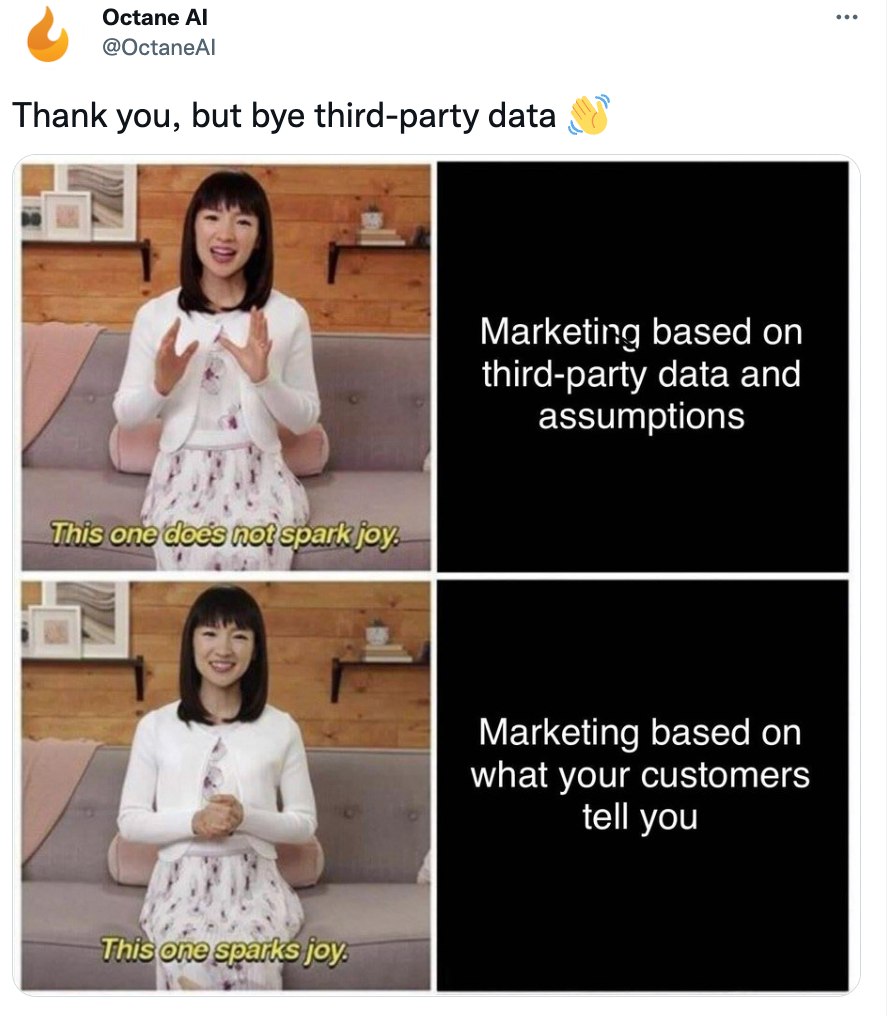
There are several ways to accomplish capturing data from customers, but quizzes on websites are taking off in the DTC world.
Take Ellie & Mac.
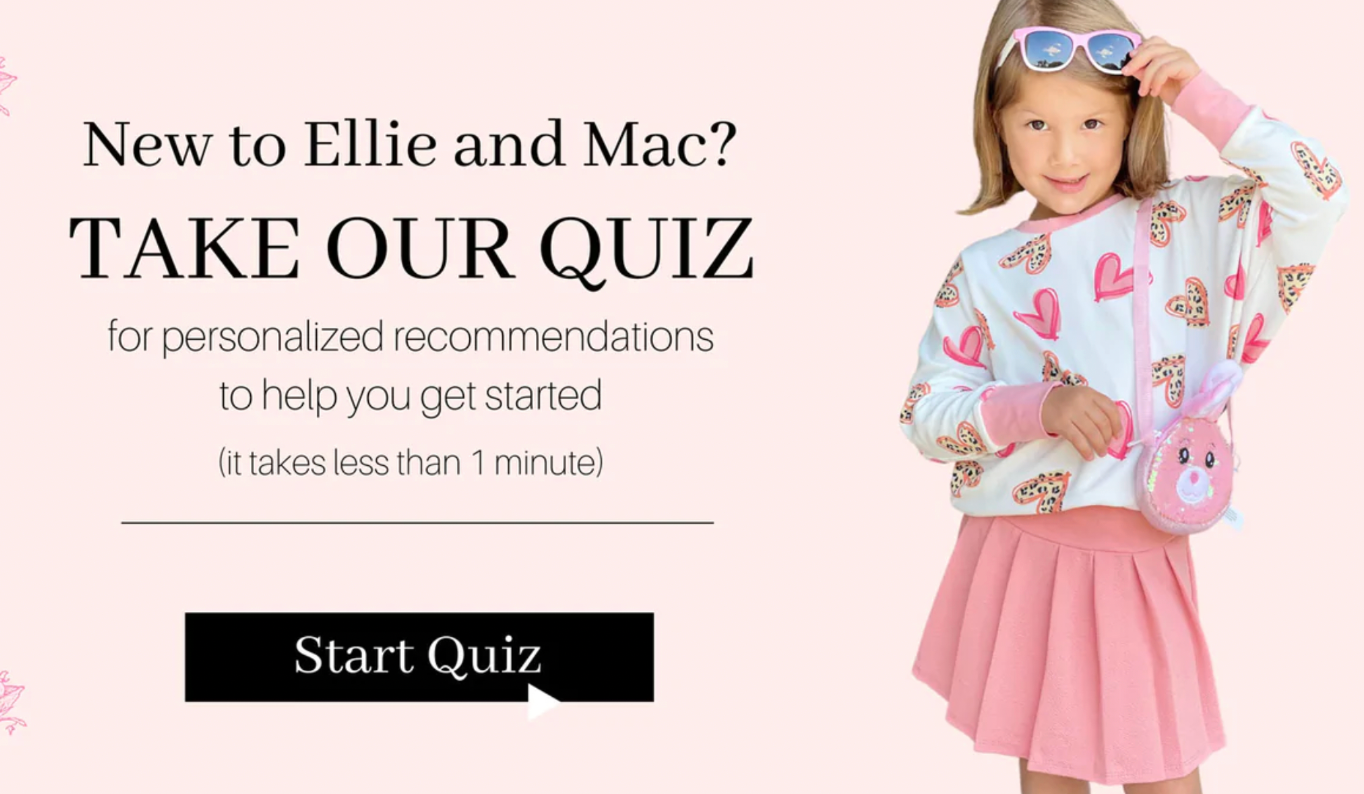
When you land on the Ellie & Mac homepage, you can take a short one-minute quiz. During this quiz, you answer personalized questions about sewing patterns, sewing level (e.g., beginning, intermediate or advanced), and preferred fabrics. At the end, Ellie & Mac collects your email address.
This is a great way to capture customer data and send personalized recommendations to customers via email.
But capturing data with a quiz is only the first step.
“Most brands understand that they should be collecting zero-party data, and they’ve seen how powerful quizzes can be for doing that. The trick, though, is to have the right systems in place to organize that data after it’s captured,” says Sara Du, co-founder and CEO of Alloy.
“One thing I hear from brands all of the time is that they have surveys set up to gather customer information, but the data quickly gets scattered across all of their tools and spreadsheets. When it gets to that point, marketers feel overwhelmed, and the data tends to gather dust on their virtual shelves. With integrations in place, brands can make this data available to all of the tools in their tech stack. From there, they can leverage it to inform their marketing campaigns across both paid and organic channels.”
Oberst offered additional advice for brands capturing zero-party data. She said brands should only use it for marketing across external channels, but also do what Orendorff and Hegstad suggested—push consumers to own platforms.
“Collecting zero-party data is only one side of the coin. The other side is knowing what to do with it—and that’s about making your owned marketing channels shine,” says Oberst.
To use your owned marketing channels well, you need customers on them to actually engage with. This is why it’s essential to grow your marketing lists and collect zero-party data at the same time, resulting in you reaching more customers and sharing messages that feel personalized.”
Trend 10: NFTs used as loyalty rewards
NFT stands for “non-fungible token.” In other words, it’s a 100% unique (non-fungible) digital asset (token) that’s recorded on the blockchain. Usually, an NFT serves some purpose in the digital world.
For example, the Genesis Curry Flow NFT is an NFT shoe from Under Armour. Under Armour sold a limited amount of these NFT shoes. Owners can dress their avatar in this NFT shoe in Gala Games, The Sandbox, or Decentraland, and it acts as a cool status symbol.
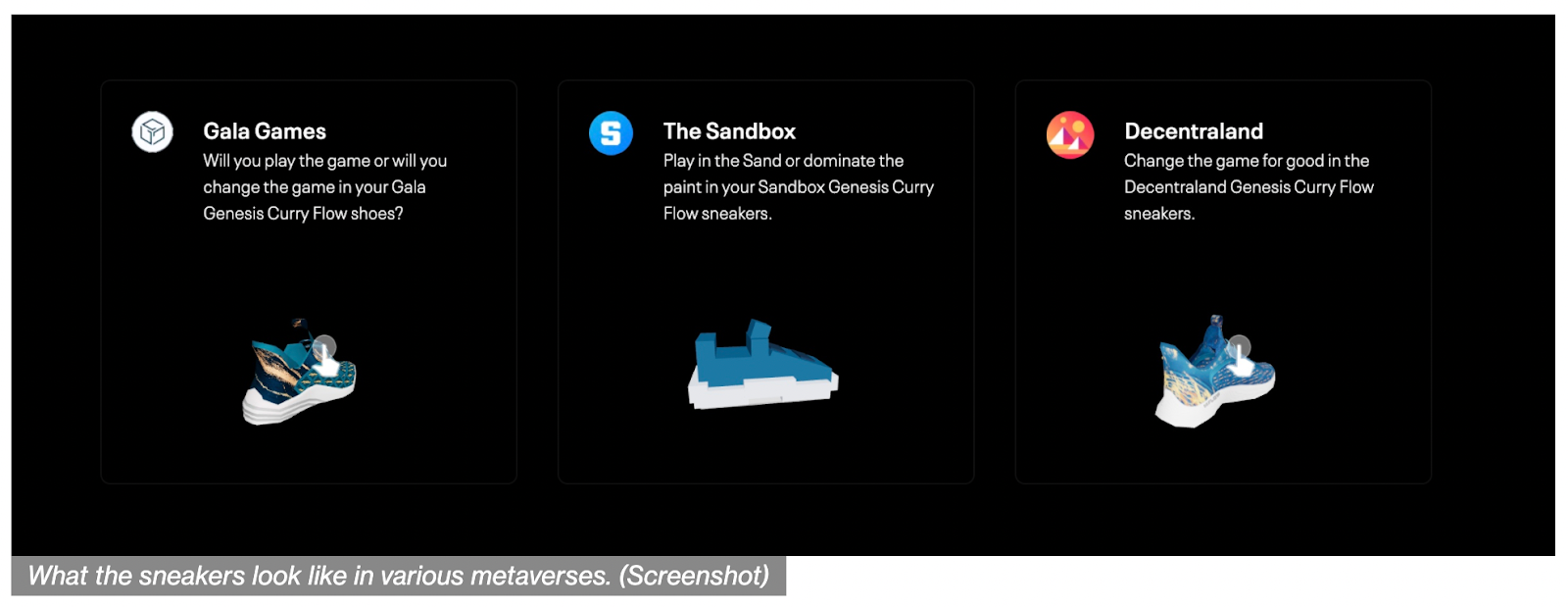
NFTs are taking off in the retail and DTC world as a way to build community, generate hype, and reward loyal customers.
Hypothetically, any brand can create NFTs for loyalty members and offer exclusive benefits associated with the NFT. But Clinique is a real-word example of a brand that is doing this well.
Clinique offers members of its loyalty program an opportunity to win free products with the Meta-Optimist NFT.
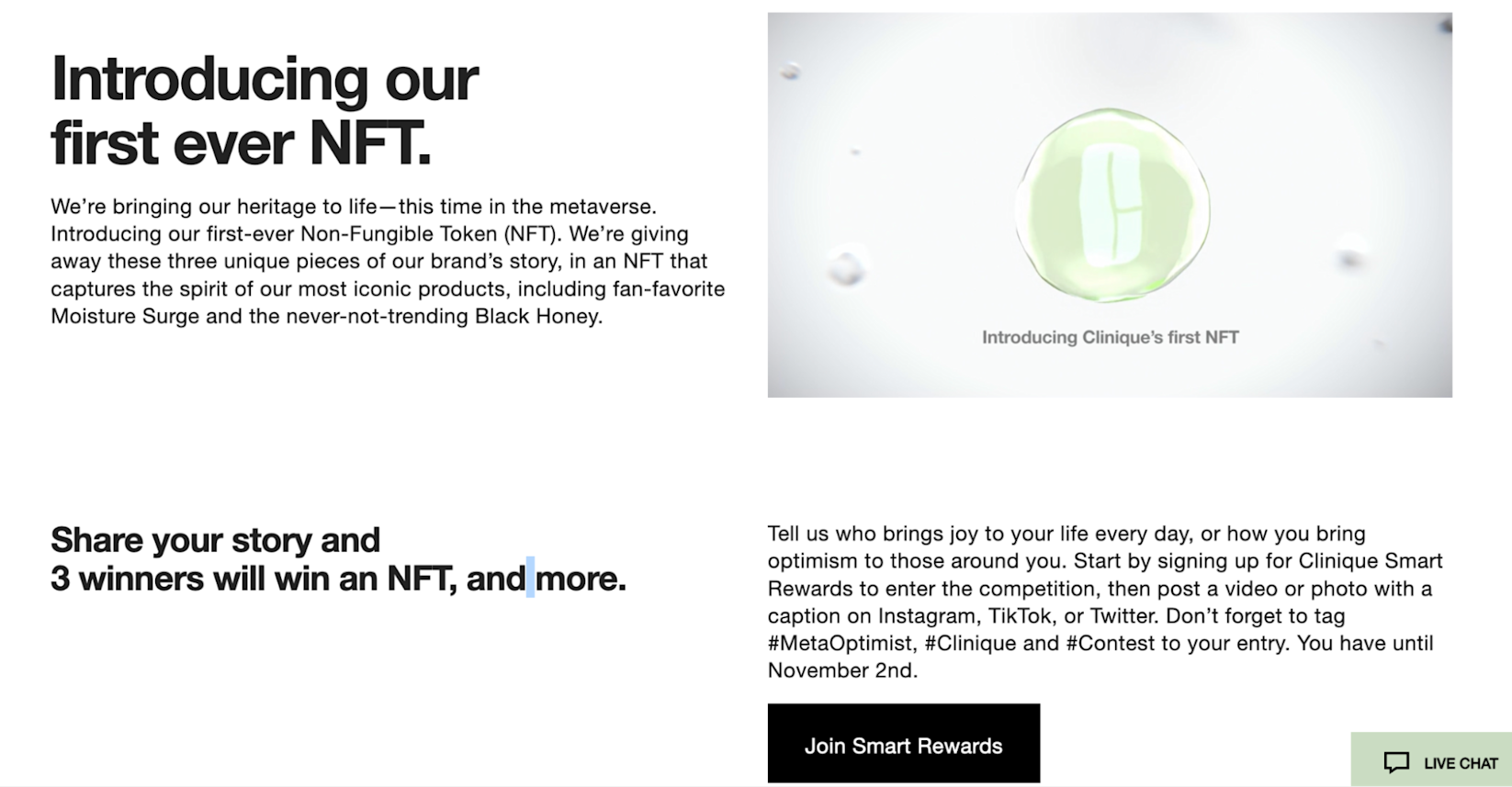
Customers can enter to win one of the three NFTs by signing up for Clinique Smart Rewards and then posting a video or photo story with a caption on social media.
This is an excellent way for Clinique to build community, capture customer stories, and incentivize people to join the rewards program.
Stay on top of DTC trends
The DTC business model is booming. It’s an excellent way to grow a business in today’s digital world, especially considering 55% of customers say they prefer to buy directly from brands.
However, it’s also important to remember DTC trends change with the winds. For more information on how to keep your DTC business thriving, download the DTC guide.






